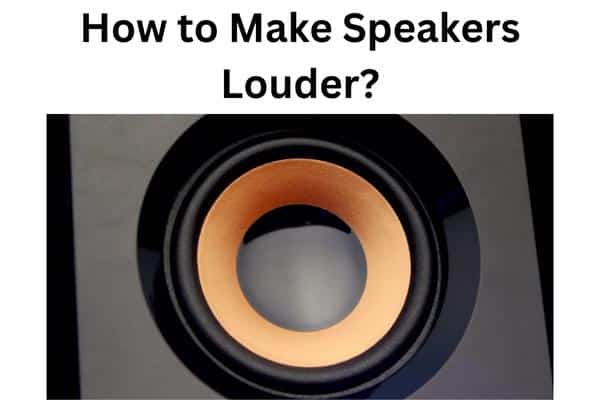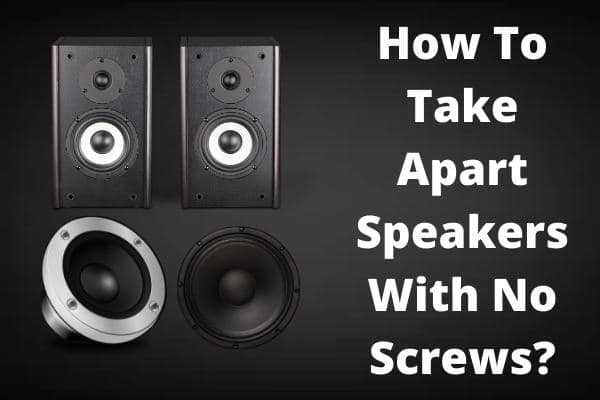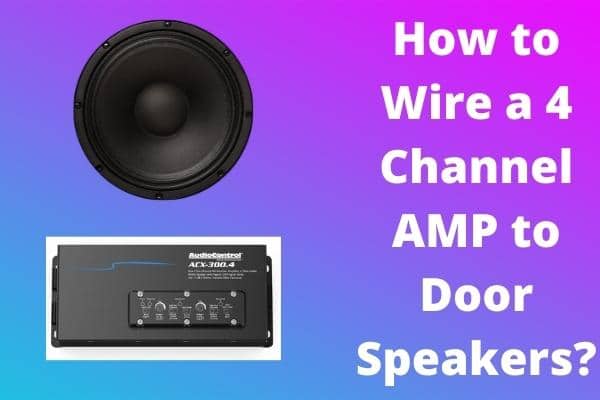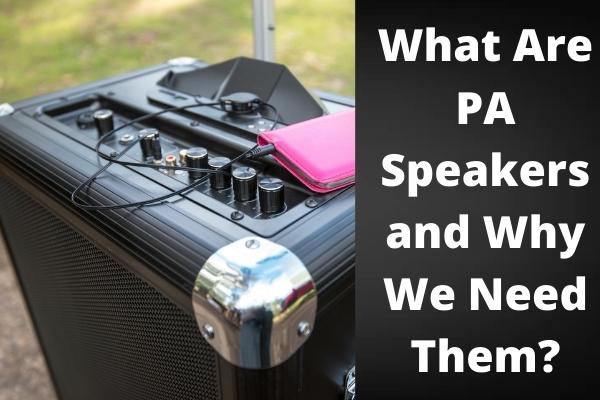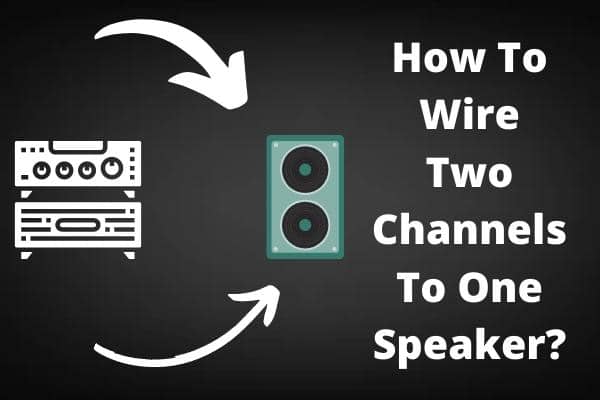
If you have been searching for how to wire two channels to one speaker, you have reached the right place. There are various ways to do so, but which one would be suitable for you is the primary question to answer.
Many of the available procedures are complicated, and a few can damage your amplifier. Then, how to carefully connect with the speaker? Today, to answer wire two channels to one speaker, we will provide you with the right and reliable ways to connect two channels with one speaker.
So, please continue to read and find it all here!
Reason for Wiring Two Different Channels To Single Speaker

There are numerous reasons to connect multiple receivers to a single speaker. Amplifications, audio sound systems, and home theaters are all common causes. So this way, you can connect any of the two pieces of equipment.
The users can purchase a new set of speakers, but that seems an expensive option. Therefore, buying connecting two speakers seems a more reliable and better choice. Why would you own two identical speaker systems to use at different times? The optimal solution will be to figure out how to share a speaker system between your receivers.
You can apply this method in multiple ways to your sound system. Most of these options are extremely practical, though their cost and setup time may vary. Here, in this post, we will show you that purchasing a new speaker is not the solution to this problem. But, it would be better to look for some of the ways to connect two of your speaker with a single receiver!
Importance of Impedance of Speaker
Wiring two channels also require consideration of the speaker’s impedance. Check the impedance of your speaker while most of the speakers have an impedance of 4, 6, or 8 ohms.
Determiner or get to know the impedance of that speaker you are interested in the wire. If you don’t find it on the speaker or packaging, search it on the internet or ask the manufacturers.
Many experts do not recommend it. The optimal strategy would be to acquire an additional speaker and connect it to both channels. You can join a single track rather than two if you’re only using one speaker.
1. Speaker Switch
As your manufacturing capabilities expand, you’ll discover that certain technologies complement one another well while others require modification to function correctly. Perhaps you have a digital video system and a separate DVD and VHS player.
Alternatively, you could be an audiophile and keep vinyl and CDs separate. When someone reaches this stage, the burning question is frequently whether two receivers can be connected to a single pair of speakers.
You can often connect two receivers with a single set of speakers by using a single switch. Automatic and manual speaker switches are both available. These will enable you to switch between receivers effortlessly.
2. Connecting Left and Right channels
Numerous individuals attempted this by combining the left and proper channels and connecting them to a single speaker. To begin, keep in mind that this is a parallel circuit, which means the current will be identical.
You will gain no benefit from it. It will never affect the quality of your sound. Rather than improving, your sound quality may deteriorate. Both channels will engage in combat. Your amplifier may become overheated, resulting in damage. Consequently, it is pretty impossible to connect both channels in this manner.
3. Switch Splitter
If you which is the best and the most reliable way to connect two channels with a speaker, the answer would be to switch splitter. The procedure is more robust, and it also safeguards your system against damage.
The channels offer you a very simplified channel configuration. The reason is that you will connect one speaker with two amplifiers at a time.
You can use 12-gauge wires with this method for high-quality home stereo systems. This unit supports channel power ratings of up to 100W. Additionally, it provides excellent audio quality because the two channels operate as a single unit.
4. Bridging an amplifier
Bridging an amplifier reduces the resistance load (measured in ohms) by half, resulting in the amplifier overheating. Verify-in your manual (or on the manufacturer’s website) whether your amplifier can operate at half the ohms it currently uses when connected to a speaker.
Near the channels on most amplifiers is a small diagram indicating the terminals used to bridge them. If your amplifier does not explicitly state that it can bridge, do not attempt it. Internally, it may already be bridged, in which case you risk damaging the amplifier.
If your amplifier is stereo (it amplifies both left and right), bridging it converts it to a mono amplifier (amplifying from one left or right).
5. Line out converter
With the help of this converter, anyone can easily connect two channels with a single speaker. This connection is capable of accepting an input of up to 50 watts.
This design incorporates several wires that aid in signal retention, thereby improving the bass quality of your speaker.
The users can connect two channels with a speaker and add another channel through this connection. Additionally, it is pretty simple to join.
It entails connecting the converter’s speaker wire to your speaker output and the amp. Additionally, the method is safe and will prevent your amps from overheating and eventually dying.
6. Mono switch method
As you may know, many vintage amplifiers include a MONO switch that allows you to connect a single speaker to two channels. It may be a suitable method for this purpose. If your stereo does not include a MONO switch, you can create one yourself.
A mono switch in any musical instrument connects two different stereo channels in a single signal. You can play mono through a single speaker (for example, old transistor radios on the kitchen windowsill), but you may only get the left or right channel if you try to play stereo through it.
Combining the two outputs is superior to using a phono Y lead because it incorporates a couple of resistors that prevent the preamp’s left and right results from shorting out.
It performs as expected, providing a more solid central mono sound in the center of your speakers. Additionally, it may reduce background noise such as pops and crackles when compared to listening in stereo mode.
Generally, the combined mono signal sounds better than half of a stereo signal. With stereo speakers, two speakers placed close together, a stereo signal will sound good, and a mono signal will sound identical through both speakers.
Additionally, this method will assist you in designing an input with a high impedance. The help combines two different signals before they reach the power amplifier, which happens due to the combination of two channels.
This method allows for the internal connection of the two channels, resulting in a single output. It is analogous to the bridge system, which combines the two signals while simultaneously amplifying the speaker.
It is a permanent process because it occurs within the amplifier’s internal components. However, it aids in the removal of the stereophonic effect, resulting in a signal that is less three-dimensional.
This method enables you to connect two channels to a speaker without causing any damage to the speaker. If your stereo does not come equipped with a mono switch, you can easily add one.
7. Dual voice coil speakers
Each speaker contains a component known as a voice coil. The voice coil is wounded around the cylinder and is used to receive the current from the amplifier.
Due to the current, the voice coil interacts with the speaker’s magnet, and as a result, you get low high sound/volume. The speaker’s cone is connected to the cylinder, which generates air pressure when it moves, thus producing sound.
A standard speaker uses a single voice coil and is ideal for stereo setups that utilize multiple speakers. This type of speaker is a single voice coil (SVC) speaker.
The dual voice coil is unique and efficient in its functioning. Every speaker contains two different voice coils that let users get out from the stereo channels simultaneously.
Numerous classic automobiles came equipped with a single dashboard speaker. Dual voice coil speakers are ideal for replacing standard dash speakers, as they allow for the transmission of both stereo channels from a single location.
The dual voice offers you multiple advantages by letting you control the impedance. Therefore, it is preferable to other standard speakers.
While a standard speaker can only be wired in one direction, a dual voice coil speaker provides significantly more flexibility. An overall wiring strategy connects both channels like left and right speakers in the dual voice coil. And this is the right way to use both voice coils for better stereo mixing.
Additionally, both voice coils can be connected in series. It will combine the voice coils into an 8-ohm mono speaker.
Conclusion
There are multiple ways to connect a single speaker with two different channels. One can choose any one of these at your convenience.
All of these strategies are equally useful to know about How To Wire Two Channels To One Speaker. Though connecting two channels with a single speaker is an excellent way to amplify the sound, you need to be very careful. Many times it can result in some unwanted situations also!

